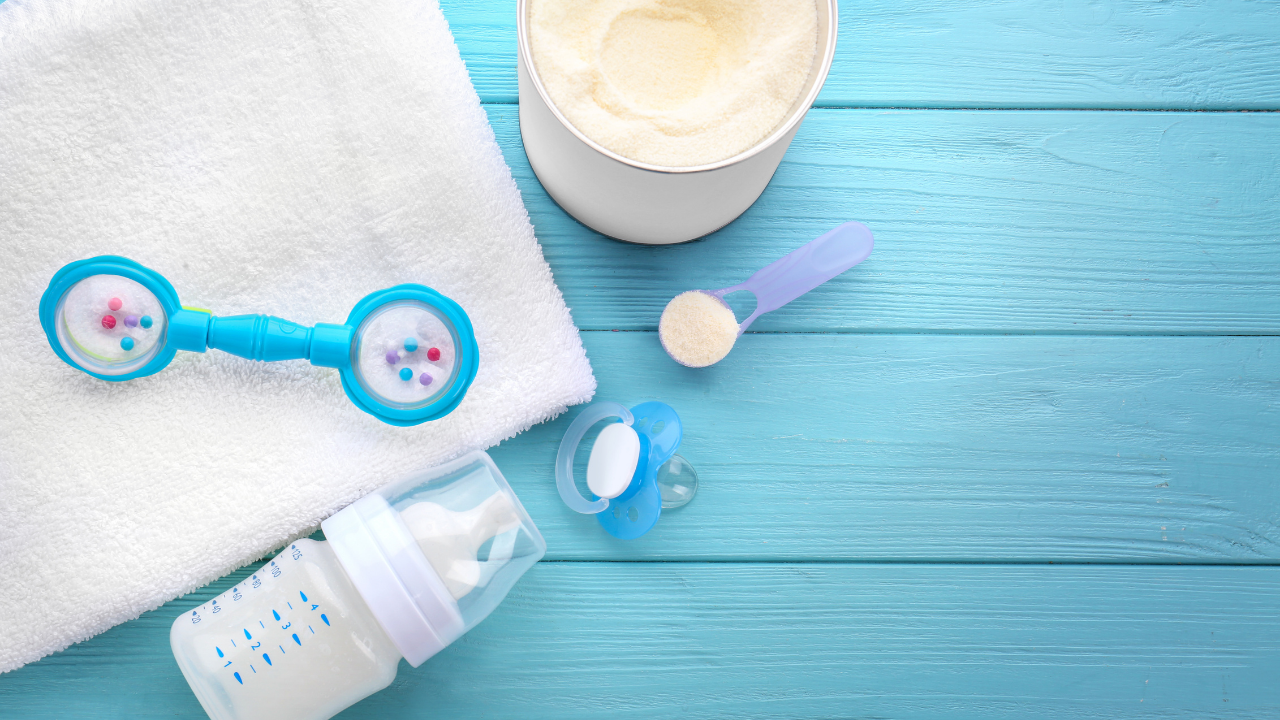A Breastfeeding Mom’s Guide to Supplementing with Formula
Jul 10, 2021
Formula is not commonly talked about amongst breastfeeding moms because most moms set out with the intention to provide exclusive breastmilk for their baby. As a lactation consultant I will always support mom with her breastfeeding goals, however, there may be times when exclusive breastmilk/breastfeeding is not possible. We will start out by pumping to be able to use mom's milk but there are scenarios when mom is not able to produce enough milk, mom and baby are separated, baby is losing weight, baby is not able to transfer the milk or is not tolerating the milk. Thankfully, all of these scenarios are rare!
The number one rule is to always FEED THE BABY! The goal is to use breastmilk, but if that is not possible then formula is the back up. It is important to be educated about how to prepare it so here are the basics about what you need to know.
What type of formula should you buy?
It is always best to check with your pediatrician first.
Most babies do well on cow's milk-based formula. Some babies, however, may need something different like soy-based or hydrolyzed formula. Your baby's doctor can help you narrow the specific formula that is right for your baby.
Formula comes packaged as a powder, liquid concentrate or ready to feed. The prices and the preparation vary.
How to Prepare Formula.
- Check the expiration date and the directions on the formula container for specific instructions.
- Powered formula and liquid concentrate formula will need to be mixed with water.
- Check with your pediatrician whether you will need to boil the water. City tap water is generally fine but it is important to have your water checked prior to using for safety reasons. Let the cold water run for several seconds and then measure out the amount of water that you need. Many parents will choose to mix formula using bottled water (do not use distilled).
- Using a clean and sanitized bottle, measure out the exact amount of formula with the exact amount of water. If using powdered formula, use the scoop that comes with the formula and when scooping the formula is should be an unpacked and level scoop of powdered formula.
- Add the water to the bottle first and then add the formula. Shake or quickly move in the shape of an "8" until it is thoroughly mixed and there are no visible clumps of formula. If you are preparing formula in bulk, then you can use a larger pitcher to make bigger quantities. You would then pour the amount you need into each bottle.
- If you are using breastmilk and prepared formula then it is safe to mix them together. If your baby is not finishing all of his bottles you may want to consider offering the breastmilk first.
- Many babies like the milk warmed, but some like it at room temperature. Warm the bottle in a large mug or bowel of warm tap water (~1-2 min), run it under warm tap water (~1-2 min) or use a bottle warmer. Check the temperature on your inner wrist before giving it to your baby. It just needs to be luke warm. Never microwave.
- Prepared formula can be stored in the refrigerator and should be used within 24 hours of mixing.
- Once the baby has started sucking on the bottle for both breastmilk and formula it must be used in 1-2 hours. Babies have bacteria in their mouth and that can potentially get into the bottle of milk.
What types of bottles are good for breastfeeding babies?
What is paced bottle feeding?
Paced bottle feeding is a way to bottle feed your baby so the feeding is slowed. Even the slowest flowing bottle can flow quicker than what a baby would do at breast so paced feeding helps to mimic breastfeeding. The bottle is held horizontonally and when the baby starts to drink quickly, then you either tip the bottle down or take it completely out of their mouth. Frequent burping is necessary with bottle feeding. Check out the Paced Bottle feeding video on the Baby's Best Beginning YouTube channel to learn more.
How much should you put in the bottle?
A generic math formula you can use to determine how much you should put in the bottle per feeding is to take the baby's weight and multiply it by 2.5. This is the total ounces per day the baby needs to grow. Divide that number by the total times per day they are eating and that is the average amount they should be eating per feeding.
Again, the number #1 rule is always FEED THE BABY! The goal is to use breastmilk first and formula if needed. Don't hesitate to reach out should you have any questions or need help with breastfeeding!
Kindly,
Stacy Notestine RN, IBCLC
Founder of Baby's Best Beginning
YOU ARE YOUR BABY'S BEST BEGINNING IN LIFE!
Wanna a BREASTFEEDING BONUS FREEBIE?
Click HERE to Learn about the 5 Secrets to Getting Breastfeeding Off to a Great Start!
I would love to have you join me and the other mamas that are just like you in my Baby's Best Beginning community!
Let's connect! I can't wait to meet you and your little one!
Baby's Best Beginning 1:1 Lactation Consultation Services
Baby's Best Beginning Instagram
Baby's Best Beginning Facebook
Let’s be (.)(.) Breast Pen Pals!
Stay connected with news and updates!
Get the latest news on upcoming classes and the latest blog posts.
We hate SPAM. We will never sell your information, for any reason.

